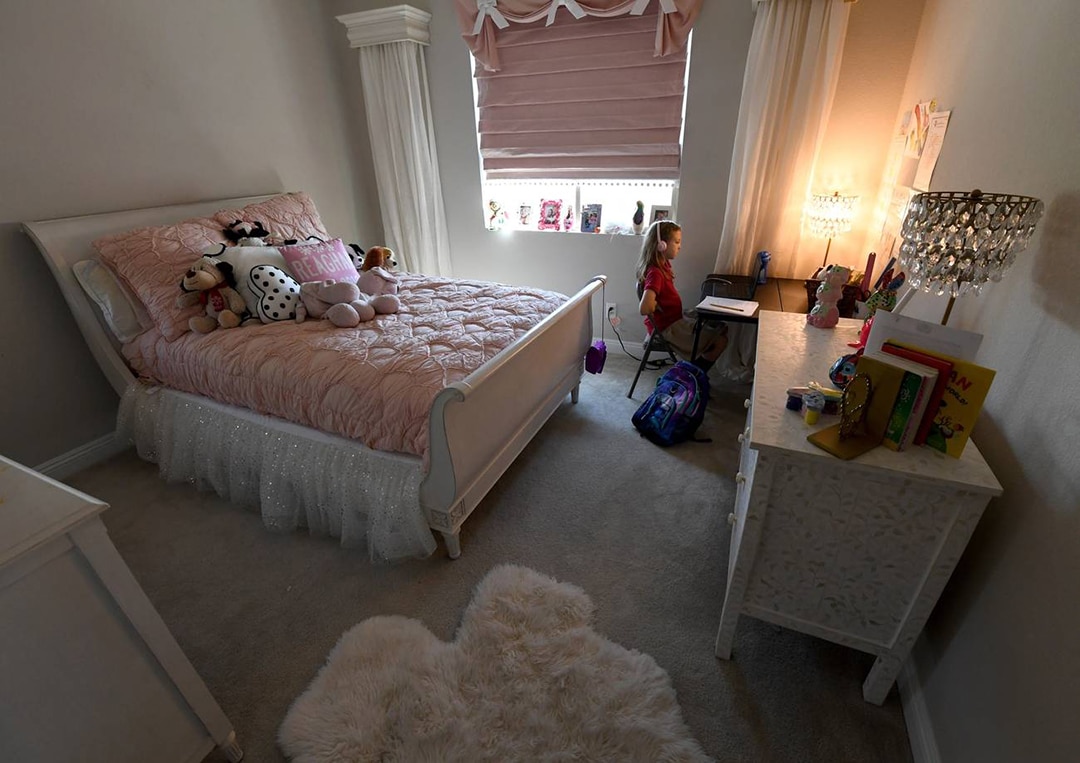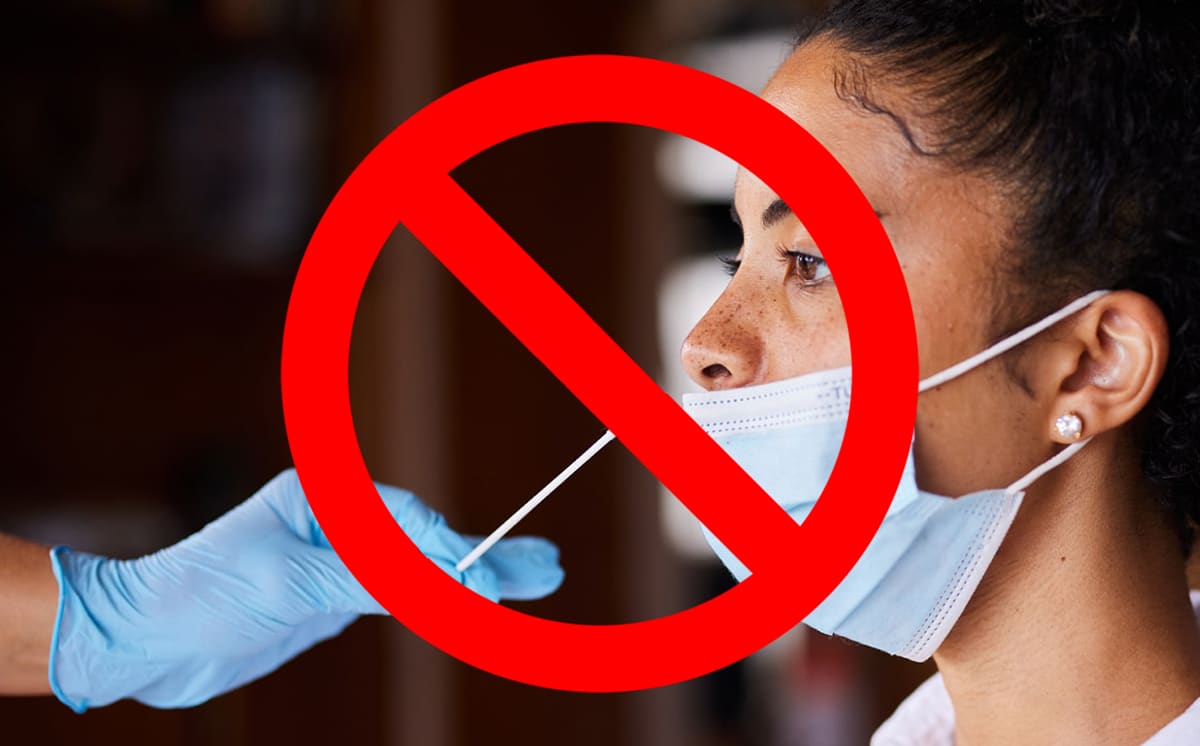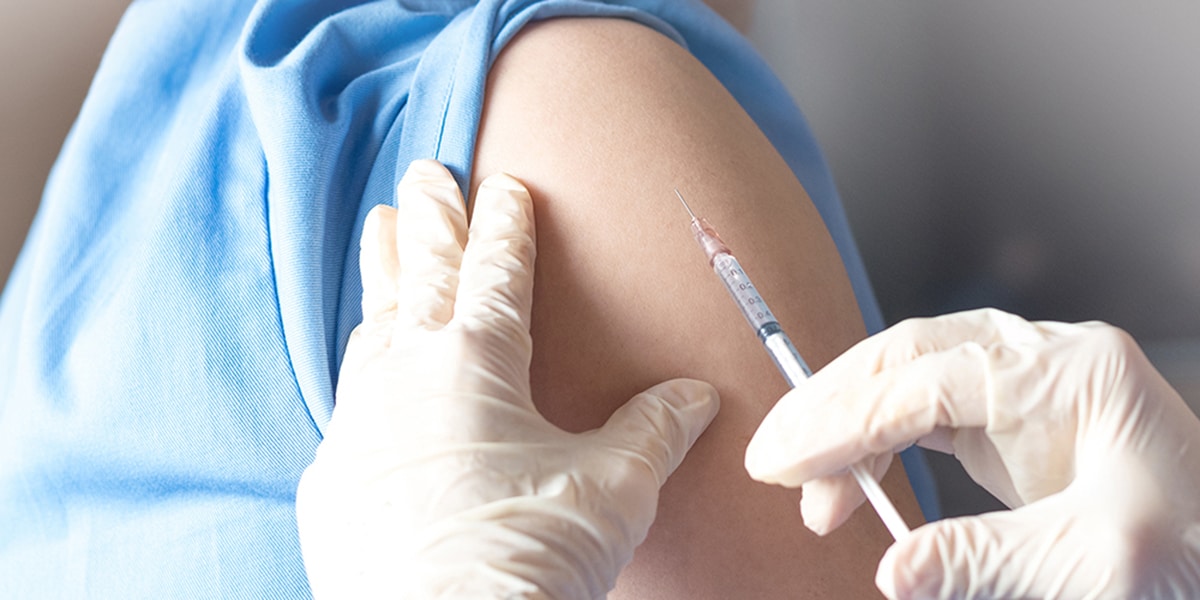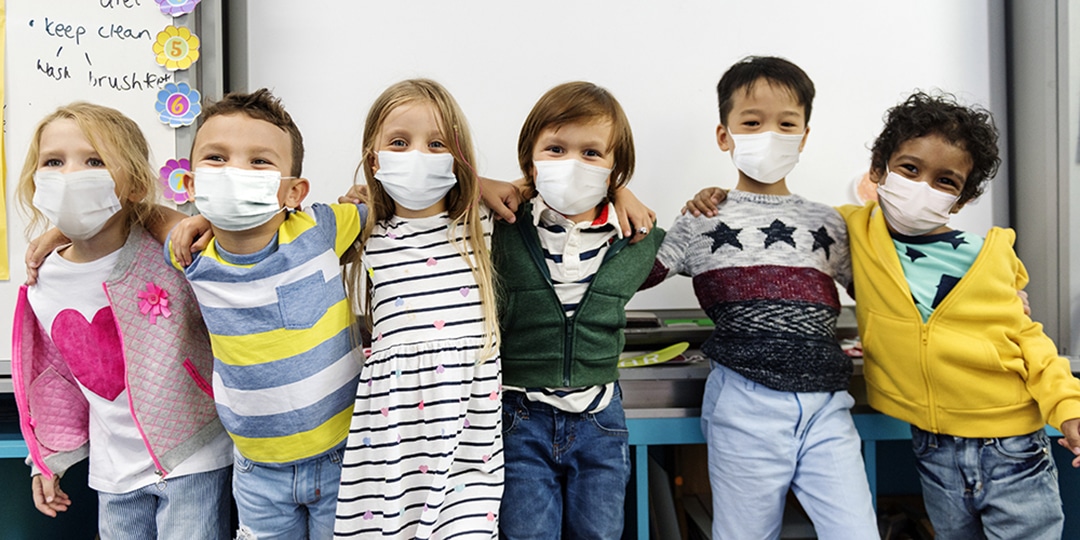

The COVID Cult Did Lasting Damage to Our Kids
In the spring of 2020, Dr. Jeanne Noble witnessed an uptick in teens and adolescents going to the emergency room in mental health distress. Dr. Noble is an associate professor of emergency medicine at the University of California, San Francisco, and the director of the COVID-19 response for UCSF’s emergency department. In the fall of 2020, she gave a presentation to Alameda County’s Public Health Department showing data that demonstrated an increase in the number of kids who were screening positive for suicidal thoughts in the ER. She wanted, she told me, to communicate how much kids were suffering and find a safe way to reopen schools.
Dr. Noble thought she had presented devastating data about ER records not only for young people exhibiting suicidal ideation but also for kids showing other warning signs, such as cutting and eating disorders. Nevertheless, she said, “the response at the end of my PowerPoint presentation was, ‘What are you trying to do?’” Kids’ mental health “was such a low priority compared to where everyone else was focusing their attention, which was COVID numbers,” she recalled.
While Dr. Noble’s early concerns were dismissed, today there is no shortage of articles and studies documenting the harm caused by COVID-19 school policies over the past two and a half years. The number of ER visits in 2021 by adolescent girls for suspected suicide attempts was 51% higher than during the same period in early 2019. Skyrocketing violence statistics involving young men, including a spate of shootings, may also be traceable to mental illnesses exacerbated by the enforced isolation of COVID-19.
There can be little question that closures permanently altered the relationship of many students to school. One survey found that the rate of chronically absent students nationwide is now 22%, 2.7 times what it was before school closures. In New York City, 4 out of 10 students are now chronically absent; in Los Angeles nearly half of all students are chronically absent. These statistics indicate an instructional system that in many cases has simply ceased to function.
The collapse of educational pathways and structures has had a particularly brutal effect on the poorest students, who can least afford to have their schooling disrupted. High-poverty schools had the lowest levels of in-person instruction, causing low-income students to fall even further behind their more affluent peers. The entirely foreseeable ways in which bad COVID-19 policy choices exacerbated inequality perversely led many public school systems to try to hide their mistakes by dismantling programs for gifted and talented students along with entrance tests and other standardized testing regimens—piling on more bad policy choices that deprive economically disadvantaged students of opportunity.
The available numbers tell a worrying story of educational slippage that is likely to keep large numbers of kids from acquiring the basic skills, both intellectual and social, that they will need to hold decent jobs. Recent test scores have dramatically declined, with one report finding that in districts offering distance learning, the decline in passing rates for math was 10.1 percentage points greater than in districts that offered in-person instruction. In Maryland, 85% of students now are not proficient in math, and in Baltimore the figure is 93%. Michigan, Washington, and other states have found dramatic declines in their test scores. In Los Angeles, the decline has been worse for younger students, with 60% of third and fourth graders not meeting English standards compared to 40% of 11th graders. Overall, the youngest children were most profoundly impacted by lockdowns and school disruptions, and some of them now lack basic life skills.
As the severity of these repercussions comes to light, some outlets—notably those that most aggressively advocated for lockdowns and masking—have been eager to suggest that we are now aware of the overwhelmingly negative consequences of these policies thanks to “new research” that has only just become available to fair-minded people, who can therefore be forgiven for having adopted the course they did. But to many doctors and scientists, the damage to kids caused by COVID-19 panic was neither inevitable nor surprising. Rather, it was the result of the public health establishment’s conscious choice to eschew rational cost-benefit analysis in favor of pet cultural theories and political gamesmanship. For those who applied the scientific method to the available evidence, the consequences were already clear just a few weeks into the pandemic. “It was not at all true that people in healthcare and public health were unaware of what was going on with children,” Dr. Noble told me. “They were not ignorant.”
What happened to the United States’ kids was not the result of an innocent mistake. It was the product of a concerted campaign of censorship and demonization of dissenting voices in support of premises that turned out to be wildly harmful to children. Scientists, doctors, and parents who urged schools to reopen based on available evidence were systematically ignored and silenced by politicians, public health bureaucrats, and legions of dedicated online COVID-19 activists, while the most vulnerable children in U.S. society suffered the consequences. Only by telling the story of how that betrayal happened is it possible to start understanding the why.
In 2020, Dr. Jay Bhattacharya, professor of medicine at Stanford University, was invited along with other scientists to the White House. “It was supposed to be a conversation between us and Deborah Birx and Tony Fauci,” Dr. Bhattacharya told me, “but both Birx and Fauci declined to be there.”
Due in part to his background in health economics, Dr. Bhattacharya knew that school closures would have long-term consequences for children. It is a consistent finding in the field, he said, that “when children stay in school longer, they lead healthier lives, they lead longer lives, and they are less likely to be poor throughout their lives.”
It was clear already in the spring of 2020 that the risk of severe COVID-19 for children was far lower than the risk posed by long-term school closures. Children were shown to be less efficient spreaders of COVID-19 than adults, negating the argument that they would become unique vectors of disease and endanger their teachers or the adults with whom they lived. “That meant that schools are special,” Dr. Bhattacharya said. “They’re not this dangerous environment that people envision them to be.” When Sweden kept schools open for children up to age 16 without masks in the spring of 2020, for example, not a single child died, and teachers were not at elevated risk for severe COVID-19.
Armed with this knowledge, Dr. Bhattacharya’s main goal at the White House meeting was to make the case for reopening schools. “I came with a document with all the scientific evidence I’d been reading about,” he said. “I was shocked to see that the leaders of the public health response, people like Deborah Birx, were not interested in talking about that evidence. In fact, they wouldn’t want to even be in the same room with me.”
Like Dr. Bhattacharya, Dr. Tracy Beth Høeg, a physician-scientist affiliated with the University of California, Davis, and consultant epidemiologist with the Florida Department of Health, knew early on that school closures would have a profound impact on poor and vulnerable children. In mid-April 2020, she watched as Denmark opened its schools after just five weeks of closures. “It felt monumental,” she told me, “because I thought this meant it would also happen in the U.S. soon.” Yet as Dr. Høeg watched schools reopen in Norway, Scotland, Finland, the Netherlands, France, Germany, Australia, and South Korea, she was increasingly concerned as many parts of the United States refused to take similar steps.
“I had a lot of trouble watching kids being cared for and educated in creative ways in Europe while American kids seemed to be abandoned from very early on in the pandemic,” Dr. Høeg said. She became the lead author in a study of schools in Wood County, Wisconsin, that was published by the U.S. Centers for Disease Control and Prevention (CDC) in its “Morbidity and Mortality Weekly Report” in January 2021. The study found that COVID-19 incidence in open schools was 37% lower than in the surrounding community.
Dr. Høeg believed this study would lead to prompt school reopenings. However, “the CDC actually came out with stricter reopening guidelines following our study, and that was the opposite of what I had expected,” she said. “They set distancing requirements and community positivity levels which made it more difficult for most schools to reopen, and these were not based on the available science but seemed to be pulled out of the air.” Dr. Høeg came to learn that the CDC had considered input from teachers’ unions over the very science the organization had published in its own journal.
Later, in September 2021, when the schools debate had largely shifted from reopening to masks, U.S. Education Secretary Miguel Cardona took to Twitter to portray the Wisconsin schools study as evidence for the efficacy of masking in school. This was an incorrect interpretation: There was no unmasked control group in the study, so it could not be used to determine if masking affected transmission. In other words, although Dr. Høeg’s study had supported schools reopening in January 2021, the CDC and the Biden administration chose not to advance this data. Once schools were already open in the fall, Secretary Cardona and others presented the study’s low rates of in-school transmission as evidence for masking in schools—a mitigation measure the study had never been designed to evaluate. This was one of many examples of disputes around school COVID-19 policies reflecting not science but political considerations.
Dr. Margery Smelkinson, an infectious disease scientist, began advocating for school reopening in October 2020 based on evidence from other countries as well as a large-scale analysis from Brown University and data from New York City schools. “It was a rude awakening to realize that scientific evidence would not win out over fear, and unrealistic views of the risks of reopening would persist,” Dr. Smelkinson told me. “I was not expecting to be villainized because I was heavily armed with data.”
Like Dr. Smelkinson, many scientists critical of school closures faced disparagement and attacks that were often overly driven by partisan passions. Some commentators and institutions claimed that school-reopening efforts were a product of far-right Trumpism, scummy ulterior motives, and racism. “The push to reopen schools is rooted in sexism, racism, and misogyny,” the Chicago Teachers Union’s Twitter account tweeted in December 2020.
“It’s fairly obvious that it became a tribal political affiliation, and amplifying the risks of COVID appeared to be wedded with a political identity and a social identity,” Dr. Ram Duriseti, a physician-scientist and clinical associate professor of emergency medicine at Stanford, told me. Dr. Duriseti believes the evidence was clear by mid-April and certainly by May 2020 that public schools could safely reopen. “The nail in the coffin, so to speak,” he said, “was when August 2020 came around and schools in multiple states opened, often without any mitigations in place, and nothing that was predicted happened. There was no mass debilitating illness of teachers or children.”
The patterns of risk were very clear to Dr. Duriseti and other physicians who dealt with diverse populations from the beginning. Dr. Duriseti told me that since the start of the pandemic, even with 35% of his overall patient volume being pediatrics, he had seen only one patient under 18 with the bilateral patchy infiltrates that are characteristic of severe COVID-19. On the other hand, there was clear indication of a youth mental health crisis. “I saw a spike in psychiatric visits for sure,” he said. “But what I really saw that was most concerning was a spike in more serious suicide attempts.” For Dr. Duriseti, it was “brutally obvious” that school closures were a catastrophic error. “I really bristle at the notion that this was not knowable, just by simple inferencing, and by this thing we call history,” he said. “People have researched these things before.”
Dr. Smelkinson also pointed out that much was already known about learning loss pre-pandemic from data on snow days, floods in Thailand in 2011, and teacher strikes in Argentina in the 1980s, all of which showed that long breaks in schooling would have significant impacts on present and future student achievement. Yet the U.S. public health establishment failed to consider all previous research on education while largely dismissing any dissenting scientists and doctors. As a result, the United States is now faced with an academic, social, and psychological disaster that will reverberate through society for years, if not decades, to come.
Why, she asked, was a fraternity house open in the same neighborhood where a kindergarten was closed?
In the first week of August 2020, Dr. Shveta Raju, an internal medicine primary care physician, wondered why her children’s school district in Georgia was closed when the neighboring district had reopened. Why, she asked, was a fraternity house open in the same neighborhood where a kindergarten was closed? Although she proactively advocated for in-person school reopening in her community, Dr. Raju doesn’t think enough physicians did, due in part to institutional policies. Almost 70% of U.S. doctors work for hospitals or corporations as opposed to independently or in small practices—a tremendous shift from just 20 years ago. “Preserving the independence of physicians is really critical,” she told me. “Part of it is that physicians should be able to maintain their voice regardless of where they practice.”
Laws or protections, Dr. Raju said, should be put in place to prevent employers from silencing them. Instead, the trend is moving in the opposite direction. The California state legislature is now considering a bill that would threaten doctors with disciplinary action if they share anything the medical board deems “misinformation.” This approach to alternative perspectives is exactly what needlessly left millions of American children out of school. It is not “misinformation,” but an official culture of censorship and credentialism that produced immense suffering.
Dr. Duriseti wonders if the aversion to considering multiple voices was in part motivated by a desire among public health bureaucrats to avoid scrutiny of their choices. “The people who forwarded this policy may have not wanted to have a conversation that they were ill-equipped to have,” he said. “It seemed, at times, that they were both numerically incapable of having the conversation or were concerned that scrutiny would breed warranted skepticism.” He pointed out that most of the people formulating COVID-19 policies like school closures had never treated COVID-19 patients at volume. Dr. Noble echoed this observation. ‘Public health officer’ is a desk job, she said, but “you need people inside public health agencies who have their feet on the ground.”
For Dr. Høeg, changing course is a matter of investigating our COVID-19 response and conducting better science. The CDC and the National Institutes of Health, she told me, should have been quicker to run studies to determine whether certain interventions worked. Instead of discouraging debate, universities should have welcomed it. “I think people outside of science and academia need to realize how much physicians and scientists have been silenced this pandemic for standing up against things like school closures,” she said.
Time and again, a narrow group of public health officials and academics demanded public and professional obedience to certain policies without acknowledging or even weighing the possible downsides. When Dr. Bhattacharya served as an expert witness in defense of Florida’s school-reopening order, it struck him, he told me, that the experts on the other side refused to consider the harms caused by school closures: “It’s as if they’d come to a pre-ordained conclusion rather than reasoning their way to what the right thing to do was.”
There was “a small cartel of experts who controlled the policy, who controlled the messaging, who controlled even who was allowed to participate in this debate or discussion,” Dr. Bhattacharya said. “We can never let that happen again.”
Yet to this day, many young children face stringent mass-testing policies, and some school districts have moved to reimplement mask mandates while adults in the surrounding community remain maskless. All of these supposed mitigation measures are ultimately justified through the idea that schools were fundamentally dangerous in 2020, when in reality they remained among the safest places for children and teachers to be throughout the pandemic.
The pretense that no one could have known the impact school closures would have erases the courageous scientists and doctors who began sounding the alarm as early as March and April 2020, often at great personal and professional risk. Worse, it deprives the victims of these policies—children and teens—of an accurate account of what was done to them and why. To pretend that the ramifications of school closures were unknowable is to excuse the inexcusable by rewriting history. The media’s recent discovery of the self-evident harms done to kids, is, for Dr. Duriseti, “the height of gaslighting.” It’s not enough just to document these harms, he said. “Apologies are in order. Accountability is in order.” What this accountability might look like is still an open question.
“In my better moments, I’m trying to think of ways to be constructive,” Dr. Bhattacharya said. “And I think the question is, How do we start to repair some of the damage we’ve done to our children?”




